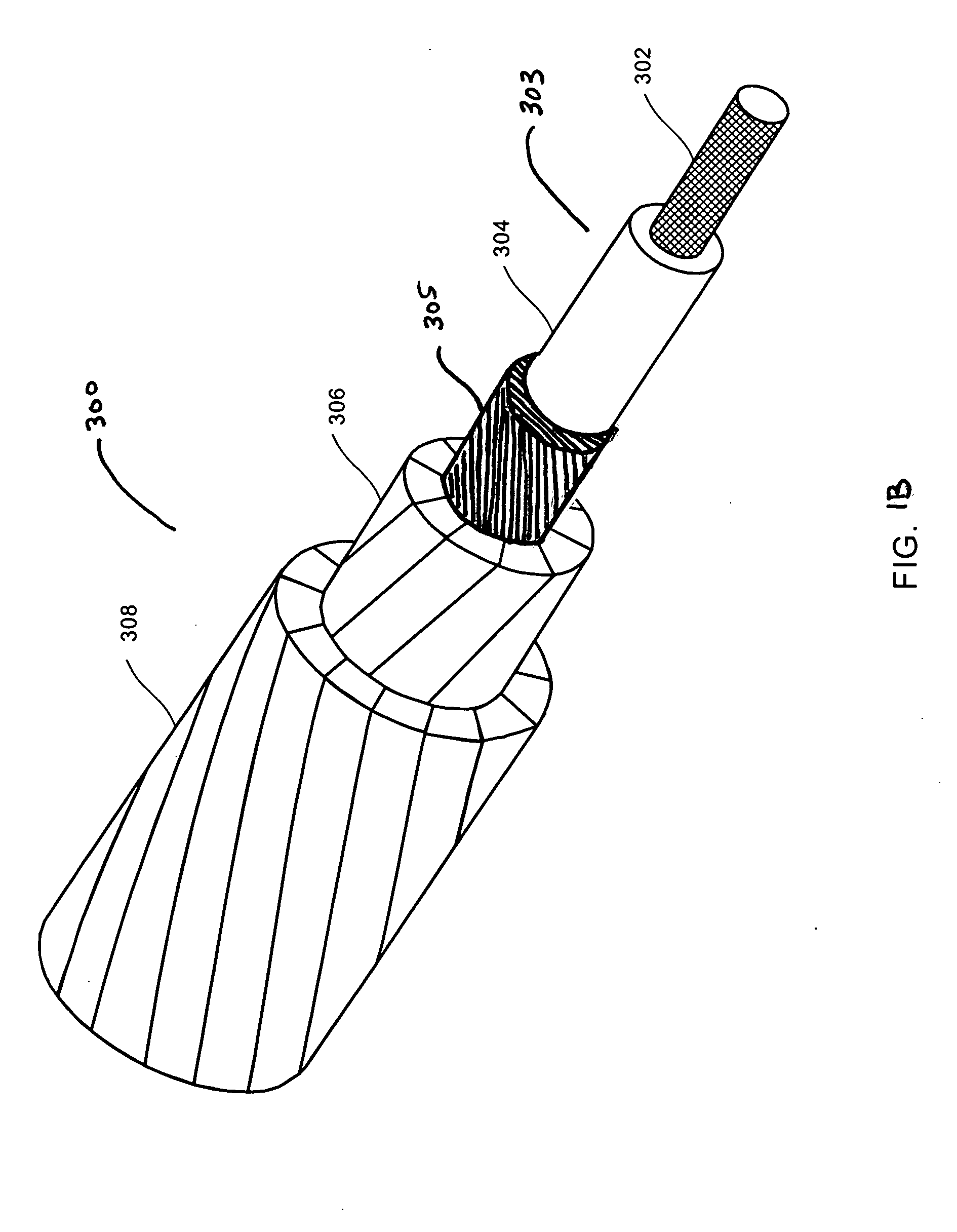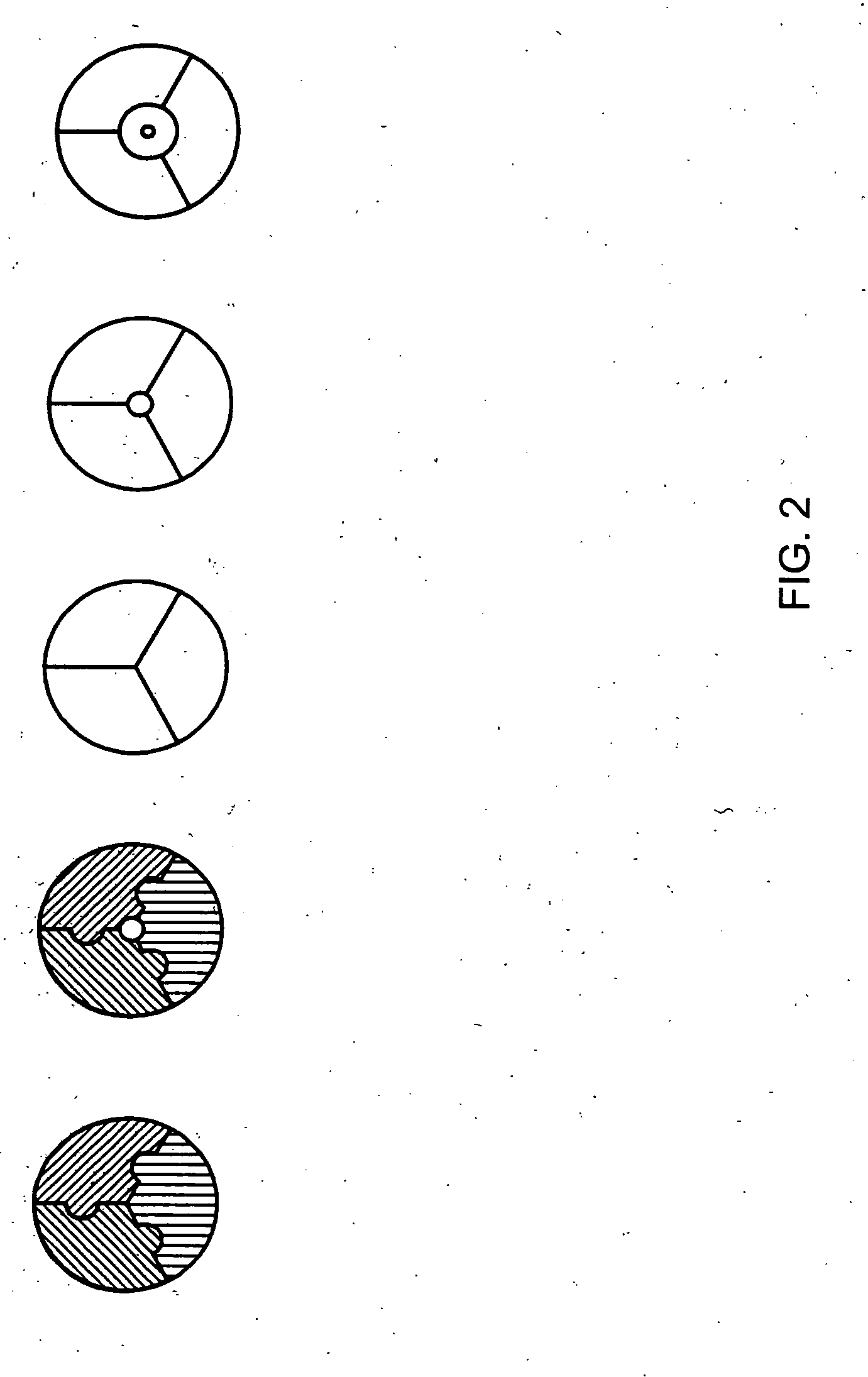Aluminum conductor composite core reinforced cable and method of manufacture
a technology of aluminum conductor and composite core, which is applied in the direction of acsr cables, synthetic resin layered products, and conductors, etc., can solve the problems of acsr cables suffering from plastic-like and permanent elongation, affecting affecting the tensile strength and creep elongation properties. , to achieve the effect of improving the overall weight of the conductor, increasing the line rating
- Summary
- Abstract
- Description
- Claims
- Application Information
AI Technical Summary
Benefits of technology
Problems solved by technology
Method used
Image
Examples
example
[0093] An example of an ACCC reinforced cable in accordance with the present invention follows. An ACCC reinforced cable comprising four layers of components consisting of an inner carbon / epoxy layer, a next glass-fiber / epoxy layer, a Kapton surface material, and two or more layers of tetrahedral shaped aluminum strands. The strength member consists of an advanced composite T700S carbon / epoxy having a diameter of about 0.28 inches, surrounded by an outer layer of 250 yield Advantex E-glass-fiber / epoxy having a layer diameter of about 0.375 inches. The glass-fiber / epoxy layer is surrounded by an inner layer of nine trapezoidal shaped aluminum strands having a diameter of about 0.7415 inches and an outer layer of thirteen trapezoidal shaped aluminum strands having a diameter of about 1.1080 inches. The total area of carbon is about 0.06 in2, of glass is about 0.05in2, of inner aluminum is about 0.315 in2 and outer aluminum is about 0.53 in2. The fiber to resin ratio in the inner carbo...
PUM
| Property | Measurement | Unit |
|---|---|---|
| tensile strength | aaaaa | aaaaa |
| temperatures | aaaaa | aaaaa |
| current | aaaaa | aaaaa |
Abstract
Description
Claims
Application Information
 Login to View More
Login to View More - R&D
- Intellectual Property
- Life Sciences
- Materials
- Tech Scout
- Unparalleled Data Quality
- Higher Quality Content
- 60% Fewer Hallucinations
Browse by: Latest US Patents, China's latest patents, Technical Efficacy Thesaurus, Application Domain, Technology Topic, Popular Technical Reports.
© 2025 PatSnap. All rights reserved.Legal|Privacy policy|Modern Slavery Act Transparency Statement|Sitemap|About US| Contact US: help@patsnap.com



